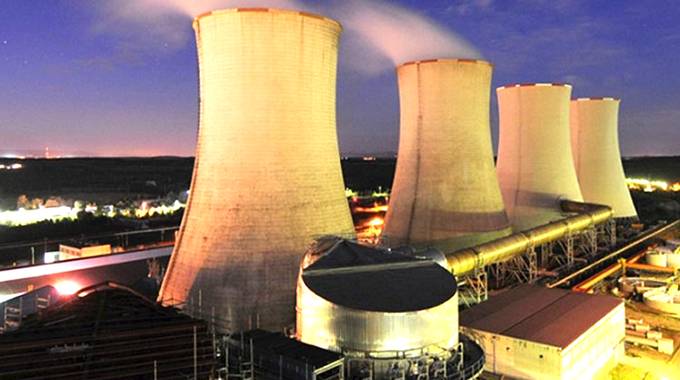Source: Editorial Comment: Zesa tariff structure will ensure recovery | The Herald 02 MAR, 2020

The automatic raising of Zesa tariffs last week by 19 percent is part of the major change dating from October last year to ensure that even the truncated electricity supply we now get continues.
It is also meant to ensure that over the next few years, Zesa expands to meet growing national requirements.
For what happened five months ago was part of the economic reforms Zimbabwe had to put in place to first stop the rot and now start growing the real productive economy.
For three decades, electricity tariffs had been set or approved by politicians currying favour with the electorate, rather than by accountants working out the true cost of a unit of electricity.
The result is there every day — the swinging load-shedding we all have to endure.
A lot is said about the regional droughts that reduced flows in the Zambezi River and thus have forced Zesa to cut back generation considerably at Kariba South Hydro Power Station.
What is not stressed are three other facts: Hwange Thermal Power Station is running at half design output, there is no second large thermal station and there is no major solar station feeding Zesa’s grid.
Hwange Thermal limps along because tariffs were continually set too low to allow Zesa to maintain the station properly, maintenance that would include replacing major equipment as it wore out.
The second major thermal station, planned since the late 1980s, has never been built either by Zesa or by a private generator because Zesa needed a higher tariff to either service the required loan or to pay the independent generator enough so they get a positive return on their investment.
The lack of solar combines the other major problem facing Zesa, some appalling management decisions along with a tariff that was too low to encourage independent investors to convert words and plans into solar panels and transformers.
Admittedly, the lack of an adequate tariff was only part of the problem, although a major part.
Zesa’s management problems contribute to the mess, with the “unbundling” of Zesa into five companies doing little than doubling the number of high rise buildings needed to house the managers without adding a single megawatt to generation capacity.
The decision to recommend that the Government go-ahead with the Kariba South Extension before the Hwange Extension is also one of the less inspired management decisions.
If tariffs had been adequate and management had been first rate, we would now be in a far different position, even with a regional drought.
Hwange Thermal would be rated at 1 500 megawatts, since the first two stages would be working and the extension, being done before Kariba South Extension, would be on line.
The actual output would probably average around 1 300MW since, with a proper maintenance programme in operation, one unit would be down at any one time for routine maintenance or a major overhaul.
Meanwhile, there would be another 600MW coming from the first private power station, since Zesa would have been able to give a contract that allowed an investor to proceed.
And there would be at least 200MW of solar, which would help Kariba South since that station could cut back by 200MW during the day and then be able to add another 400MW at night as it used most of its day’s water ration at night rather than full time.
In fact, with that set up, Zesa would not be able to cope with all off-peak power demand using just thermals and solar and reserving the Kariba daily water ration for peak hours, but could possibly even be able to generate a little extra peak power at Kariba and sell that to Eskom of South Africa, which thanks to poor maintenance, inadequate tariffs and dubious management, is short of peak power.
Eskom is not in such a bad mess as Zesa because it was only messed up by politicians for a single decade. It now has new management.
Meanwhile, in Zimbabwe, the regulator, the Zimbabwe Energy Regulatory Authority, finally did its job for October last year by studying the calculations showing what Zesa needed.
We need to remember that Eskom and Hidroeléctrica de Cahora Bassa (HCB) are not charities.
They will supply Zimbabwe, although Eskom only in off peak hours, but for money.
The coal miners feeding Hwange Thermal are in business, and need to be paid for coal. Zesa needs to maintain its stations and its grid.
So Zera not only did the initial sums, but also put in a formula that gives automatic tariff rises in line with inflation and changes in exchange rates.
Political interventions are now positive.
Minister of Energy and Power Development Fortune Chasi has laid down the law at Zesa, changing the board and chief executive, because he wants the management mess fixed.
With tariffs and management being fixed, Zesa is on the road to eventual recovery.
And, while leaving the tariff sums to Zera, the Government did step in with a limited two-tier subsidy or cross subsidy that cushions considerably private households that are prepared to take the required steps to limit consumption.
This requires following every hint and suggestion to limit consumption, including wearing an extra jersey in winter rather than switching on a heater, but it is possible for a single family to live within the subsidised 200 units a month, now costing $198 with the rural levy.
Production sectors are less worried about the latest increase, since Zesa power is way below the financial and operating costs of generators and solar, but what they want is a continuous and assured supply, again a management reform and an engineering catch up.
COMMENTS
This is the closest moment The Herald came close to report objectively on issue!